This is one of the best cupcakes I have ever made and it works without eggs! Someone described these cupcakes as decadent. They truly are delicious. I think I have eaten five today; they are irresistible.
I make mine with fresh pumpkin purée but you can use canned organic pumpkin. I highly recommend taking the time to make the purée though. You can use it for pumpkin bread, pumpkin sage cream sauce (you can use pumpkin instead of butternut squash puree), and pumpkin soup. Don’t forget to roast the zinc rich pumpkin seeds.
The pumpkin cream cheese icing finishes the cupcakes. The orange juice and zest adds the gourmet zing. You do not need a ton of icing. If you want it to look like one from a bakery, you will need to add a lot more powdered sugar but I think you will loose the cream cheese flavor.
Below are the cupcake ingredients. The icing ingredients are in the icing instructions.
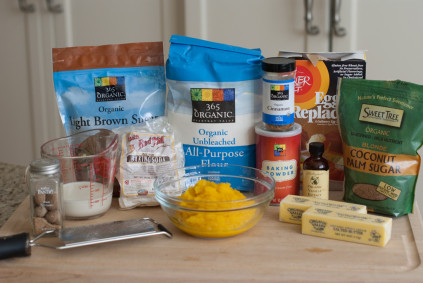
Directions
1) Roast the pumpkin at 400 degrees for 25 to 30 minutes. For more detailed instructions, look at the pumpkin purée post. It really is easy.
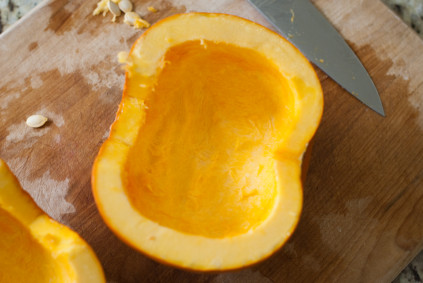
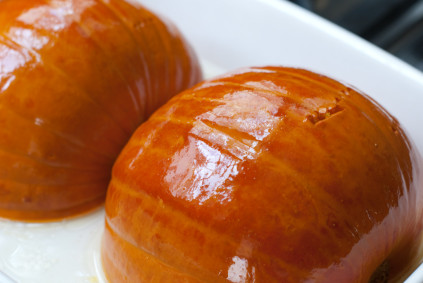
2) Cream 1 1/2 sticks of unsalted or pasture butter. Add 1 cup of cane or coconut palm sugar, 1 cup of brown sugar and mix until smooth. Add the egg replacer or 3 large eggs (mix after each egg added). Make sure you mix the egg replacer in a separate bowl first. I use EnergT and mix 6 tablespoons of warm water and 4.5 teaspoons of egg replacer. Mix until smooth.
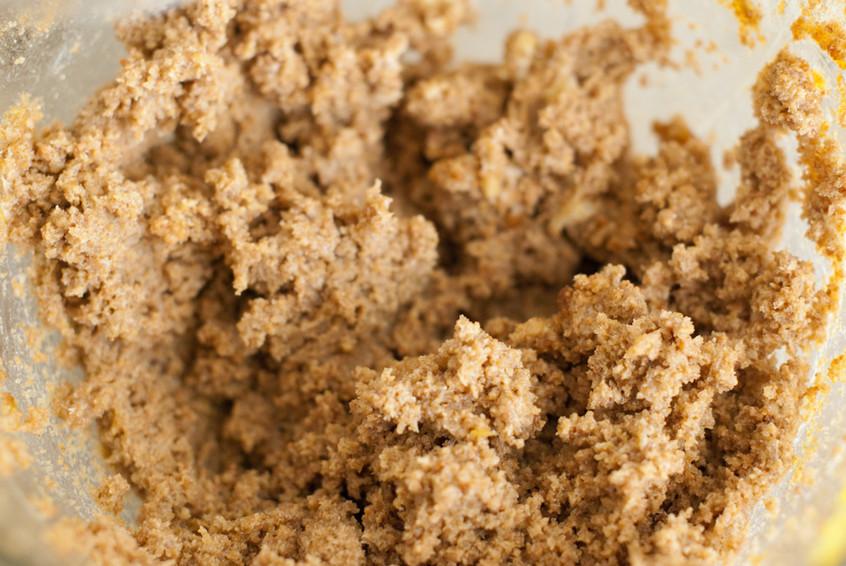
3) In another bowl, combine the 1/2 cup of buttermilk, 1 teaspoon vanilla extract, 1 cup pumpkin purée.
4) In a third bowl, combine the 2 cups of all purpose flour, 2 teaspoons baking powder, 1 teaspoon baking soda, 1 1/2 teaspoons cinnamon and 1/2 teaspoon freshly ground nutmeg. Use a microplaner to grind the nutmeg.
Note: if you do not have buttermilk, pour 1 teaspoon lemon juice into a mixing cup and then add the whole milk until you have 1/2 cup. The lemon juice creates the buttermilk.
5) Now let’s mix the ingredients. Add a little of the flour mixture and buttermilk mixture to the butter mixture. Mix and then add some more. Mix and then add the last of the mixture until smooth. It will be light and fluffy looking.
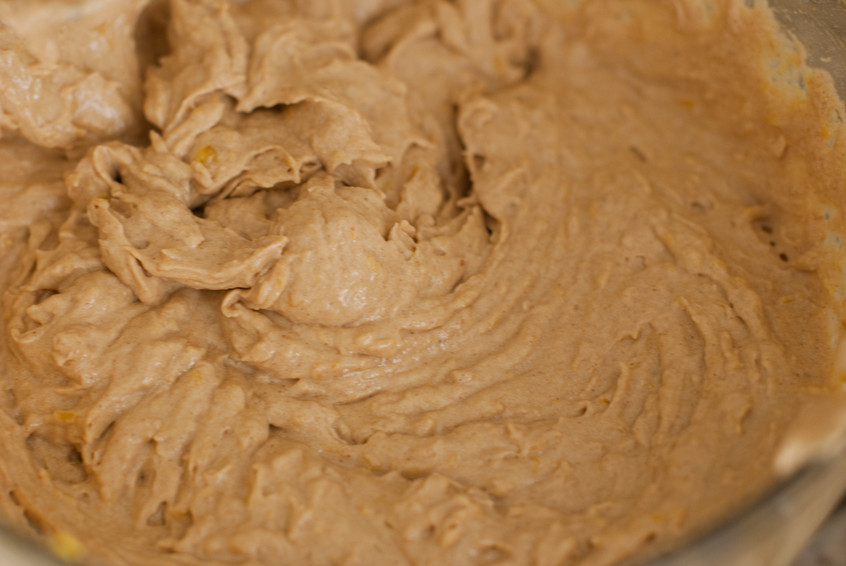
6) Place 22 unbleached cupcake liners into 2 muffin pans. Fill the empty muffin cups with water to bake evenly. Bake in a preheated oven of 350 degrees for 20 to 25 minutes. You will smell the cupcakes when they are close to done. Stick a fork in the middle and make sure it comes out clean.
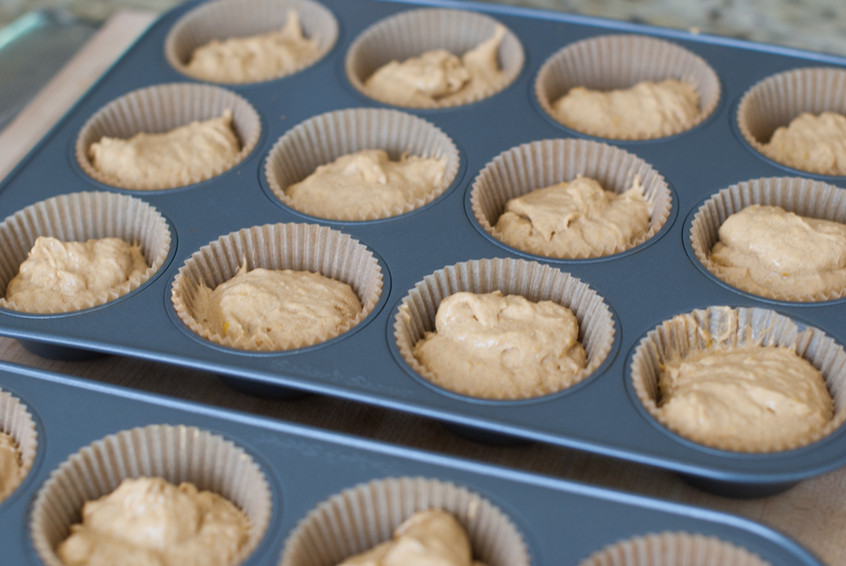
7) While the cupcakes are cooling, mix the icing. Make sure the cream cheese and butter are at room temperature. Blend 4 ounces of organic cream cheese, 1/8 cup pumpkin purée, 2 ounces pasture butter, 1 teaspoon organic orange juice, 1 teaspoon grated orange zest, 1/4 teaspoon vanilla extract. Slowly add the 3 cups of organic powdered sugar. Beat until light and creamy for several minutes. The icing will be runny and cover the top of the cupcake. If you want a thicker icing, add more sugar.
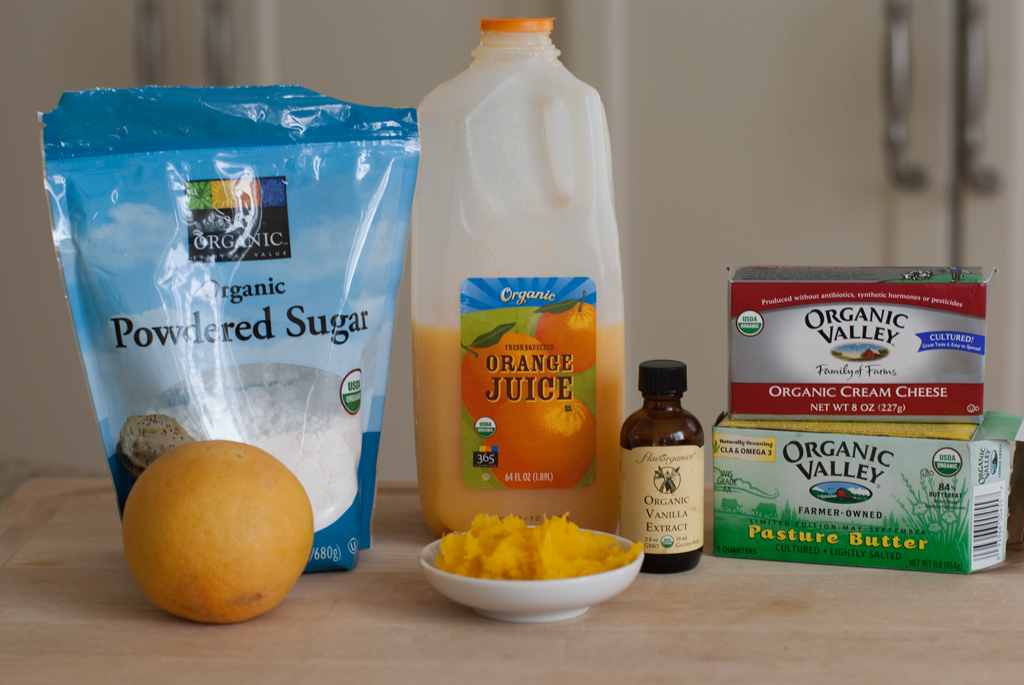
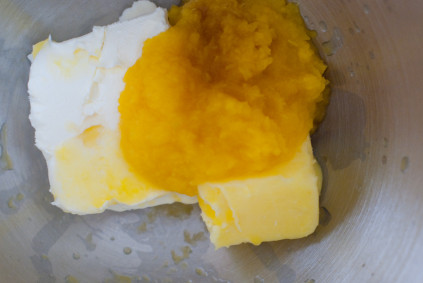
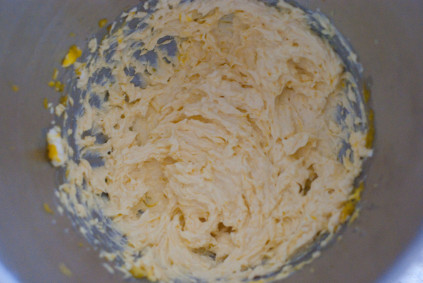
8) Ice the cupcakes and add a piece of lemon or orange peel on top for a garnish or decorate for Halloween. Enjoy!
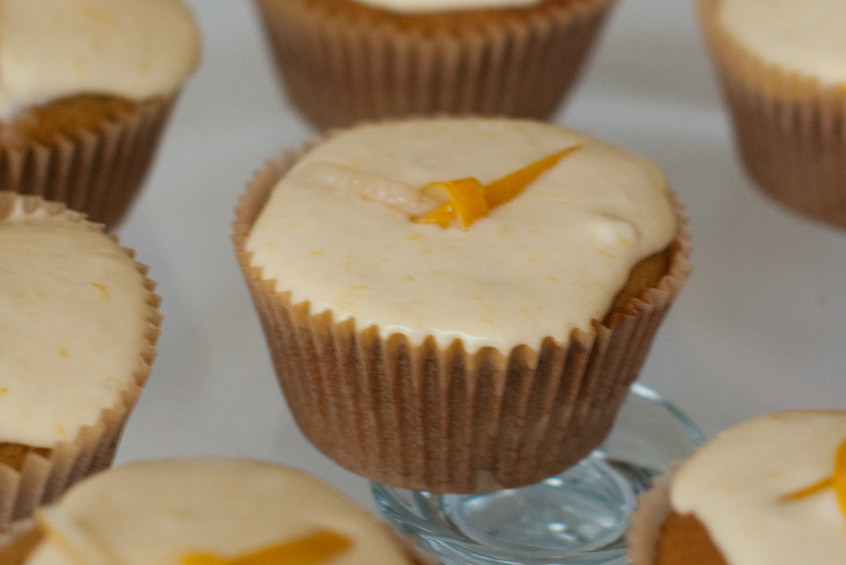
Why You Want to Eat This!
Pumpkin
Each cup of canned pumpkin contains 80 calories, 1 g of fat, 20 g of carbohydrate and 7 g of fiber. It also provides 760 percent of the daily value of vitamin A, 17 percent of vitamin C, 6 percent of calcium and 19 percent of iron. Some canned pumpkin may have salt added, containing almost 600 mg per cup serving.
- Carbohydrates- Carbohydrates are an energy source for muscles and the brain. In fact, carbohydrates are the only energy source for the brain. Canned pumpkin is a complex carbohydrate source, and because it contains both carbohydrates and fiber, it can help prevent extreme fluctuations in blood sugar levels. This is especially important for people with diabetes and other conditions that require consistent blood sugar levels.
- Fiber- The American Heart Association suggests consuming approximately 25 g of fiber a day. With 7 g per cup, canned pumpkin can help you reach that goal. Fiber adds bulk to the diet, aiding in digestion, alleviating constipation and helping to lower cholesterol. In addition, fiber increases the feeling of fullness, or satiety, which can play a role in weight management.
- Vitamin A- Canned pumpkin is a source of vitamin A, which is an antioxidant. Antioxidants help reduce free radical damage, thus helping to prevent cell damage that may cause chronic diseases and contribute to aging. In canned pumpkin, vitamin A is in the form of beta-carotene. Beta-carotene, a carotenoid, also gives pumpkin its orange color. Other health benefits of beta-carotene include improved eye health as well as proper formation and growth of mucus membranes, soft tissues and skin.
- Vitamin C- A water-soluble vitamin, vitamin C plays an important role in tissue growth and repair, thus making vitamin C necessary in wound healing and the proper development of ligaments, scar tissue, gums and teeth.
- Calcium- Another nutrient in canned pumpkin is the mineral calcium. Calcium plays an important role in bone health and can help reduce the risk of osteoporosis. Other functions of calcium include blood clotting, cellular signaling and muscle contraction, including contraction of the heart.
- Iron- A mineral in every cell in the body, iron is necessary for the development of red blood cells and aids in transportation of oxygen to tissues. The iron in canned pumpkin is more readily absorbed. This is because vitamin C increases the absorption of non-heme iron, which is iron from plant sources. Read more (I could not have said this better than this Livestrong description)
Cinnamon
- Cinnamon is an excellent source of manganese and fiber. It also has potassium, calcium, iron, zinc and magnesium. Cinnamon may help the body regulate blood sugar levels and can be beneficial in high carb foods liked baked breads. The spice helps the body respond to insulin so it may be helpful for individuals with type 2 diabetes.
- Cinnamon may be good for individuals with platelet issues or at risk for stroke or heart attacks since Cinnamaldehyde prevents platelets from clogging in the blood vessels.
- The smell is invigorating and may help adults and children focus and improve brain activity. ?Research led by Dr. P. Zoladz and presented April 24, 2004, at the annual meeting of the Association for Chemoreception Sciences, in Sarasota, FL, found that chewing cinnamon flavored gum or just smelling cinnamon enhanced study participants? cognitive processing. Specifically, cinnamon improved participants? scores on tasks related to attentional processes, virtual recognition memory, working memory, and visual-motor speed while working on a computer-based program.? read more
Pasture Butter
- “Produced without antibiotics, or synthetic hormones and pesticides, Organic Valley Pasture Butter is seasonally produced in small batches at the height of pasture season, providing higher levels of vitamins, CLA (conjugated linoleic acid), and balanced omega-3 and omega-6 fats. Healthy milk from healthy cows makes healthy butter for healthy families!” read more
Recipe from Country Living, October 2002 issue
